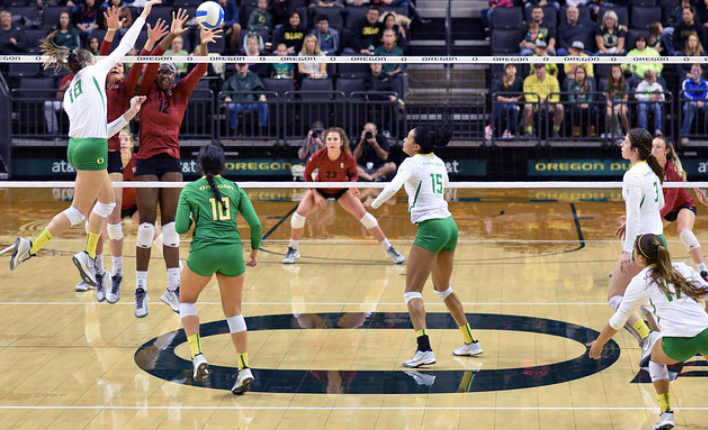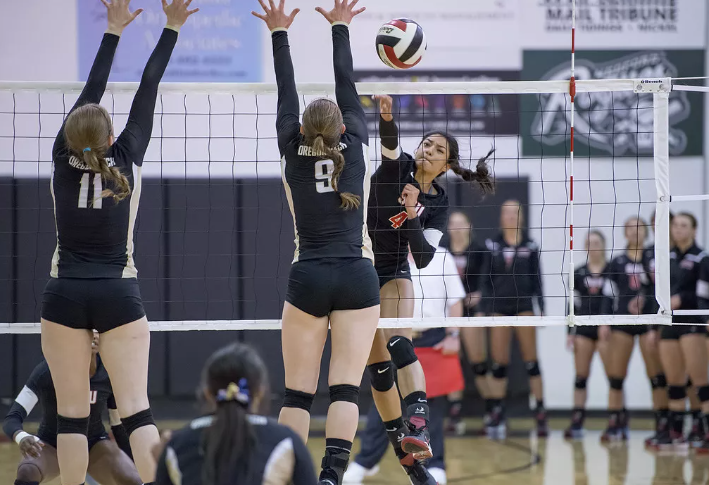
What Does Side Out Mean in Volleyball?
Volleyball is a game of precision, teamwork, and strategy, and one of the core concepts that players and fans alike must understand is side out. Whether you’re new to the sport or a seasoned player, understanding side out is crucial to mastering the game. This article will explore everything you need to know about Side Out, from its history and evolution to strategies for achieving it. We’ll also look at its impact on volleyball gameplay and why it’s an essential component of a successful team.

Introduction to Side Out in Volleyball
The term side out is fundamental to volleyball, and it refers to a situation in which the receiving team wins the right to serve by successfully defending against the opponent’s serve and scoring a point. Essentially, when the serving team loses the point, it’s called a side-out, and the opposing team gains possession of the serve.
Side out is a pivotal moment in volleyball because it represents a shift in control. In traditional side-out scoring, a team could only score when they were serving. The game dynamic has shifted since rally scoring was introduced, but side out is still deeply rooted in volleyball terminology and strategy. Achieving a side out means that your team has stopped the other team’s momentum and is ready to start a scoring run of its own.
In modern volleyball, the concept of side out remains highly relevant, especially in the context of rally scoring, where every rally results in a point for one team or the other. Understanding how to achieve a side-out is essential for both offensive and defensive play. Whether you’re playing competitively or recreationally, mastering side-out tactics can help you improve your overall performance on the court.
The History and Evolution of Side Out Scoring

The idea of side out originates from the early days of volleyball, which was invented in 1895 by William G. Morgan. Back then, volleyball used a traditional side-out scoring system, where only the serving team could score points. If the receiving team won the rally, they would earn the right to serve, but no points would be awarded.
This original side-out scoring system could lead to long, drawn-out games, as teams need to be serving in order to score. Matches could last hours, especially if both teams were evenly matched and struggled to maintain long-serving streaks. Side-out scoring required a team to not only win the rally but also maintain their serve to accumulate points.
In the late 1990s, the International Volleyball Federation (FIVB) introduced rally scoring, which changed the way points were awarded. In rally scoring, every rally, whether won by the serving or receiving team, results in a point. However, the concept of side-out did not disappear. Instead, it evolved. While the receiving team could now score points without having to serve, the term “side out” continues to be used to describe the change in possession of the serve.
Understanding the Concept of Side Out
A side out in volleyball occurs when the receiving team successfully wins a rally against the serving team. This could happen due to a variety of factors, such as the serving team making a mistake (like hitting the ball out of bounds or into the net), or the receiving team executing a successful attack after receiving the serve. Once the side-out is achieved, the receiving team gains the serve.
In modern volleyball, achieving a side out is seen as a defensive success. It breaks the momentum of the serving team and creates an opportunity for the receiving team to go on the offensive. When a team achieves a side out, the players rotate one position clockwise before the next serve.
Key situations leading to a side out:
- A strong defensive block stopping a spike.
- An opponent’s serving error.
- Winning a long rally through strategic play or a successful attack.
The moment a side out is achieved, the focus shifts to maximizing the opportunity with a service run. Therefore, a side-out not only stops the opposition from scoring but sets up the receiving team for an offensive push.
How Side Out Affects the Flow of a Volleyball Game
Side out plays a crucial role in the flow of a volleyball game. When a team achieves a side out, it shifts the momentum from defense to offense. For the serving team, maintaining the serve is essential for racking up points, and losing the serve through a side out can stall their progress. Conversely, for the receiving team, achieving a side out means they now have a chance to put pressure on the opposition.
The flow of the game often hinges on how effectively teams can perform side-outs. Teams with strong defensive skills, such as effective blocking and digging, will often achieve more side-outs and prevent their opponents from building momentum. Additionally, a side-out gives a team the opportunity to disrupt the rhythm of the opposing server, which can be especially important against teams with strong serving abilities.
Frequent side-outs can create a back-and-forth dynamic in the game, where neither team is able to establish a significant lead. However, teams that can consistently achieve side outs while also converting their serves into points will typically dominate the game.
Side Out vs Rally Scoring: Key Differences
One of the major shifts in volleyball came with the transition from side-out scoring to rally scoring. While both systems have their merits, they differ in significant ways:
- Side Out Scoring: Only the serving team could score points. If the receiving team won the rally, they would gain the serve but would not earn a point. This led to long matches, as teams had to win the serve and then score points consecutively to win.
- Rally Scoring: Introduced in the late 1990s, rally scoring changed the game significantly. In this system, every rally results in a point, regardless of which team is serving. This made games faster and more dynamic, as both teams had an equal opportunity to score points.
Despite the switch to rally scoring, side out remains an essential part of volleyball terminology. While both systems emphasize the importance of gaining control of the serve, rally scoring keeps the game moving at a quicker pace and makes every point critical.

Why Side Out is Important for Defensive Play
Side out is particularly important in volleyball because it directly ties into a team’s defensive strategy. A well-executed side out requires strong defense, whether that means blocking an opponent’s spike or digging a hard-hit ball to keep the rally alive. For teams with strong defensive skills, achieving side-outs can turn the tide of a match, especially if they can stop an opponent’s service run before they score too many points.
Defensive play becomes even more crucial when facing strong offensive teams that excel in serving or attacking. By achieving a side out, teams can neutralize the opposing team’s scoring opportunities, giving themselves a chance to score points and take control of the game. In this sense, side out is both a defensive and offensive tactic.
Strategies to Achieve a Side Out in Volleyball
Achieving a side out in volleyball requires a mix of defensive awareness and offensive execution. Here are some key strategies to help your team consistently achieve side outs:
- Strong Serve Reception: The first step to a successful side-out is receiving the serve effectively. A well-placed pass to the setter allows the team to transition from defense to offense smoothly.
- Efficient Transition to Attack: After receiving the serve, teams need to execute a quick and effective attack. A powerful spike or well-placed tip can catch the opposing team off guard and secure the point.
- Blocking and Defense: A strong defensive front at the net can stop an opponent’s spike and shift momentum in your favor. Additionally, back-row players must be ready to dig any incoming attacks.
- Minimize Errors: Unforced errors like hitting the ball out of bounds or into the net can prevent your team from achieving side-outs. Staying focused and minimizing mistakes is essential for success.
Teams that can consistently implement these strategies will find themselves achieving more side-outs, disrupting their opponent’s flow, and gaining more opportunities to score.
Side Out Drills to Improve Your Team’s Defense
To become proficient at achieving side-outs, teams must focus on improving their defensive skills. Here are some drills designed to help teams strengthen their side-out capabilities:
- Serve Receive Drill: This drill focuses on improving the accuracy of serve reception and transitioning to an attack. Players line up in serve-receive formation, and the coach serves balls to different zones. The receiving team must pass the ball accurately to the setter and then execute a quick attack.
- Block and Dig Drill: This drill emphasizes blocking at the net and digging in the back row. One team spikes the ball while the other focuses on defending through blocks and digs, aiming to win the rally and achieve a side out.
- Transition Drill: Players practice transitioning from defense to offense after receiving the serve. This drill helps players react quickly, turning defensive moments into offensive opportunities.
By incorporating these drills into practice sessions, teams can enhance their ability to execute side outs and gain the upper hand in matches.
How Side-Out Scoring Changed the Game of Volleyball
The transition from side-out scoring to rally scoring revolutionized the sport of volleyball. Under the old side-out system, matches could last for hours, as only the serving team could score points. The introduction of rally scoring sped up the game, making it more dynamic and exciting for both players and fans.
However, the concept of side-out remains integral to volleyball strategy. Teams still need to break the opponent’s serve and gain control of the game to score points, especially under rally scoring rules. In this way, side-out scoring laid the foundation for modern volleyball gameplay.
Leave a Reply